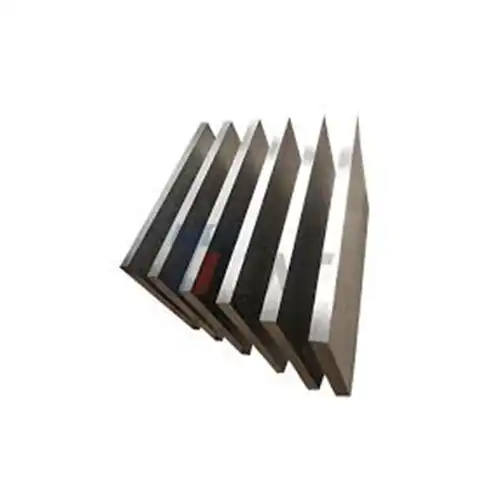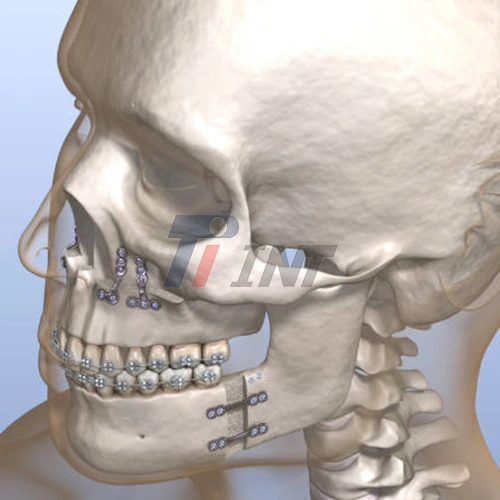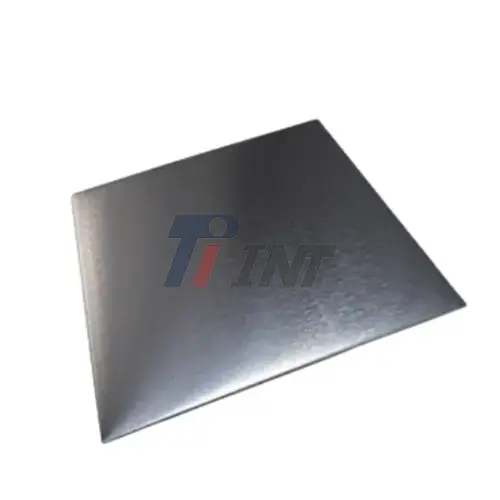The Evolution of Maxillofacial Surgery and the Role of Titanium Plates
Maxillofacial surgery has come a long way since its inception, with titanium plates playing a pivotal role in its advancement. These medical marvels have transformed the landscape of facial and jaw surgeries, offering surgeons unprecedented precision and patients improved recovery prospects.
Historical Context: From Traditional Methods to Titanium Innovation
In the early days of maxillofacial surgery, practitioners relied on rudimentary techniques such as wiring and external fixation devices to stabilize facial fractures. These methods often resulted in prolonged recovery times, increased risk of infection, and suboptimal aesthetic outcomes. The introduction of titanium plates in the 1980s marked a paradigm shift in the field, ushering in a new era of surgical possibilities.
The Unique Properties of Titanium for Medical Applications
Titanium's exceptional properties make it an ideal material for maxillofacial surgery titanium plates. Its biocompatibility ensures safe long-term implantation, while its lightweight nature facilitates ease of use during surgeries. The high strength-to-weight ratio of titanium allows for flexibility in surgical applications without compromising durability. Moreover, titanium's corrosion resistance ensures long-lasting performance even in the demanding environment of the human body.
Baoji INT Medical Titanium Co., Ltd., a leading manufacturer in the field, offers titanium plates made from pure titanium and Ti-6Al-4V ELI (Grade 5, Grade 23) alloys. These materials boast a tensile strength of ≥ 830 MPa, providing robust support for facial and jaw reconstructions. The company's products are available in thicknesses ranging from 0.5mm to 2mm, with customizable widths and lengths to meet diverse surgical needs.
Advancements in Plate Design and Manufacturing
Over the years, significant advancements have been made in the design and manufacturing of maxillofacial surgery titanium plates. Modern plates feature anatomically contoured shapes that closely mimic the natural curvatures of facial bones, facilitating easier placement and improved aesthetic results. Computer-aided design and 3D printing technologies have further enhanced the customization capabilities, allowing surgeons to create patient-specific implants for complex cases.
INT's titanium plates undergo rigorous quality control measures, adhering to ISO9001:2015 and ISO13485:2016 standards. The company also offers various surface treatments, including anodization and sandblasting, to optimize the plates' performance and integration with surrounding tissues.
Clinical Applications and Benefits of Titanium Plates in Maxillofacial Surgery
Titanium plates have found widespread application in various maxillofacial surgical procedures, offering numerous benefits to both surgeons and patients alike. Their versatility and reliability have made them an indispensable tool in the surgeon's arsenal.
Common Procedures Utilizing Titanium Plates
Maxillofacial surgery titanium plates are employed in a wide array of procedures, including:
- Facial fracture repair: Plates are used to stabilize and realign fractured bones in the face and jaw.
- Orthognathic surgery: Titanium plates help reposition the jaw to correct misalignments and improve bite function.
- Craniofacial reconstruction: In cases of congenital defects or trauma, plates provide structural support for rebuilding facial features.
- Temporomandibular joint (TMJ) surgery: Titanium implants can replace damaged joint components, restoring jaw function.
Advantages for Surgeons and Patients
The use of titanium plates in maxillofacial surgery offers numerous advantages:
- Improved surgical precision: The lightweight nature of titanium allows for delicate manipulation and precise placement during surgery.
- Reduced operating time: Pre-contoured plates and specialized instrumentation streamline the surgical process.
- Enhanced stability: The high strength-to-weight ratio of titanium provides robust support for healing bones.
- Minimized risk of complications: Titanium's excellent biocompatibility reduces the likelihood of rejection or infection.
- Faster recovery: The stability provided by titanium plates often allows for earlier mobilization and quicker return to normal activities.
- Improved aesthetic outcomes: Low-profile plates and anatomically designed implants contribute to better cosmetic results.
Case Studies and Success Stories
Numerous case studies have demonstrated the efficacy of titanium plates in maxillofacial surgery. For instance, a 2019 study published in the Journal of Cranio-Maxillofacial Surgery reported successful outcomes in 95% of patients who underwent mandibular reconstruction using titanium plates. Patients experienced improved facial symmetry, restored jaw function, and high satisfaction rates.
Another noteworthy case involved a 34-year-old patient who suffered severe facial trauma in a motor vehicle accident. Using customized titanium plates from INT, surgeons were able to reconstruct the patient's shattered zygomatic arch and orbital floor. The patient experienced a smooth recovery, with excellent aesthetic results and full restoration of facial function.
Future Innovations and Emerging Trends in Maxillofacial Surgery Titanium Plates
The field of maxillofacial surgery continues to evolve, with ongoing research and development pushing the boundaries of what's possible with titanium plates. Several exciting trends are emerging that promise to further enhance patient outcomes and surgical precision.
Smart Implants and Sensor Integration
Researchers are exploring the integration of sensors and smart technologies into titanium plates. These advanced implants could provide real-time data on bone healing, stress distribution, and potential complications. For example, a team at the University of Washington is developing titanium plates with embedded sensors that can detect early signs of infection or implant loosening, allowing for proactive intervention.
Bioactive Coatings and Surface Modifications
The next generation of maxillofacial surgery titanium plates may feature bioactive coatings that promote faster osseointegration and reduce the risk of complications. Scientists are investigating various surface modifications, such as nanostructured titanium surfaces that mimic natural bone architecture, to enhance cellular adhesion and bone formation.
INT is at the forefront of this research, exploring innovative surface treatments that go beyond traditional anodization and sandblasting. These advanced coatings aim to further improve the already excellent biocompatibility and fatigue resistance of their titanium plates.
3D-Printed Custom Implants
Advancements in 3D printing technology are revolutionizing the production of custom titanium implants for maxillofacial surgery. This approach allows for the creation of highly personalized plates that perfectly match a patient's unique anatomy. A 2021 study in the Journal of Oral and Maxillofacial Surgery demonstrated that 3D-printed titanium plates resulted in improved surgical outcomes and reduced operating times compared to traditional off-the-shelf implants.
Biodegradable Titanium Alloys
While current titanium plates are designed for permanent implantation, researchers are exploring the development of biodegradable titanium alloys. These innovative materials would provide initial stability for bone healing and gradually degrade over time, eliminating the need for removal surgeries and reducing long-term complications associated with permanent implants.
As these emerging trends continue to develop, the future of maxillofacial surgery titanium plates looks incredibly promising. Patients can look forward to even more personalized, efficient, and effective treatments that will further simplify recovery and improve overall outcomes.
Conclusion
Titanium plates have undeniably transformed the landscape of maxillofacial surgery, offering unparalleled benefits in terms of surgical precision, patient recovery, and long-term outcomes. As we've explored throughout this article, the unique properties of titanium—including its excellent biocompatibility, lightweight yet durable nature, and corrosion resistance—make it an ideal material for facial and jaw surgeries.
From repairing complex facial fractures to facilitating intricate craniofacial reconstructions, titanium plates have proven their worth time and again in clinical settings. The ongoing advancements in plate design, manufacturing techniques, and surface treatments continue to push the boundaries of what's possible in maxillofacial surgery.
Looking to the future, exciting innovations such as smart implants, bioactive coatings, and 3D-printed custom solutions promise to further enhance the efficacy of maxillofacial surgery titanium plates in maxillofacial procedures. These developments will undoubtedly contribute to even better patient outcomes and simplified recovery processes.
For those interested in learning more about state-of-the-art medical titanium products or exploring customized solutions for maxillofacial surgery, don't hesitate to reach out to the experts at INT. Contact them at export@tiint.com to discover how their advanced titanium plates can simplify recovery and improve outcomes in facial and jaw surgeries.











 2025-10-10 08:47:15
2025-10-10 08:47:15

